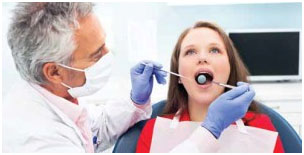BE AWARE OF THE POTENTIALLY HARMFUL METAL COMPONENTS IN YOUR DENTAL WORK
 There are lots of factors to consider when it comes to restorative dental materials. Physical properties include tensile and compressive strength, resistance to corrosion and tarnish, ability to cast well and bond with ceramic opaque and porcelain, the coefficient of expansion and contraction, and yield strength, to name a few.
These physical properties are important to dentists because the human mouth is a hostile environment with moisture, chemical attack with acid and alkaline foods, high loads and temperature changes all take their toll on dental restorative materials.
Another factor that is very important to me is biocompatibility. Why? Because of the potentially harmful components in dental materials, which are implanted into human tissue.
There are lots of factors to consider when it comes to restorative dental materials. Physical properties include tensile and compressive strength, resistance to corrosion and tarnish, ability to cast well and bond with ceramic opaque and porcelain, the coefficient of expansion and contraction, and yield strength, to name a few.
These physical properties are important to dentists because the human mouth is a hostile environment with moisture, chemical attack with acid and alkaline foods, high loads and temperature changes all take their toll on dental restorative materials.
Another factor that is very important to me is biocompatibility. Why? Because of the potentially harmful components in dental materials, which are implanted into human tissue. Toxic Metals
Dental amalgams are about 50 percent mercury, which is the second most toxic naturally occurring element on the planet, next to radioactive plutonium. Amalgam does not render the mercury harmless, like I was taught in dental school. It actually vaporizes continuously. Mercury is a potent neurotoxin and immune suppressant, and it negatively impacts the cardiovascular and connective tissue systems. Another component is nickel, which is used in most silver-colored cast metals for crowns, usually partially covered by porcelain. These alloys typically contain 75 percent nickel and 2 percent beryllium. Nickel is the most carcinogenic metal known, and many women are allergic to it. Many orthodontic brackets are about 10 percent nickel.
Other metal components include nickel, chromium and cobalt in partial dental frameworks. Titanium dental implants can be made with 100 percent titanium or a common alloy that includes 6 percent aluminum and 4 percent vanadium. All of these materials have great physical properties, but biologically they are a disaster. For example, aluminum has been implicated in many health problems, including breast cancer, according to research published in the Journal of Applied Toxicology.¹
Safe Options
Fortunately, modern biologic dentistry is now able to get away from almost all metal. Fillings can be tooth-colored composite or milled ceramic. Crowns and bridges can be made with many different types of ceramics, from feldspathic, to lithium disilicate, to zirconia. Partial dentures can now be made from a thermoplastic called acetyl that is very strong and inert. It doesn’t absorb or give off any chemicals or bacteria and comes in many tooth shades. It’s strong enough to use in occlusal rest preps and for clasps.
Biocompatible, metal-free implants from zirconia, such as those from Z-systems in Switzerland, are widely used in Europe and now available in the U.S. Being non-metallic, they do not conduct electricity and therefore have no effect on electrical meridian pathways, and being pure white, they are much better looking in upper anterior tooth replacement cases.
Many orthodontic cases can be treated with hard plastic retainers that progressively straighten teeth. These plastics don’t give off any bisphenol A (BPA). Familiar brand names are SureSmile and Invisalign. There are some difficult cases, however, that still require bonded brackets and wires.
Some metal brackets are low nickel, 0.5 percent versus 10 percent, for standard brackets. Ceramic brackets are also an option, but they do slow down treatment and cost more. Also, some orthodontic wires are nickel free. Today’s modern dentist has many restorative options that were not available even 10 or 20 years ago. Fortunately, modern dentistry can be entirely biocompatible and beautiful at the same time.
¹ J Appl Toxicol, 2011 Apr; 31 (3):262-9.

